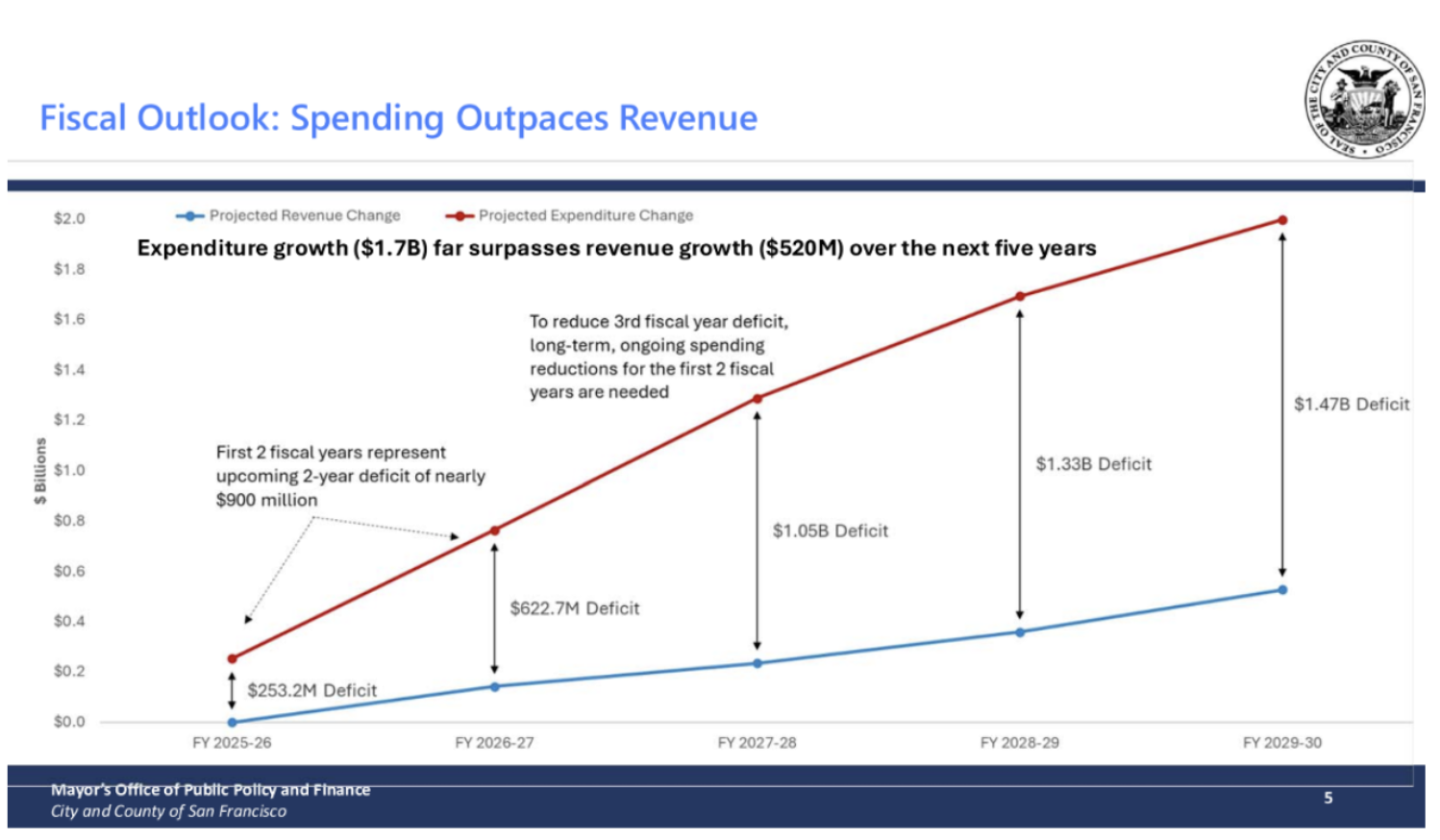San Francisco’s Budget: The Deficit We Can’t Ignore
Part 4 of 13: A Forecast of Expanding Deficits As Far As We Can See
Courtesy Mayor’s Office of Public Policy and Finance
The San Francisco Controller’s Office projects that the city will run increasingly large deficits over the coming years—in fact, the deficit is expected to grow dramatically every year from now until 2030 (the outer year of the forecast), when it is calculated to reach an estimated $1.5 billion.
That number alone is alarming. But in truth, it may be an underestimate.
The city’s long-term revenue and expenditure trajectories suggest a grimmer picture beyond 2030. Unless there is a major change — either a surge in sustainable revenue or a significant reduction in spending — the gap between what San Francisco earns and what it spends will continue to widen.
Unless there is a major change — either a surge in sustainable revenue or a significant reduction in spending — the gap between what San Francisco earns and what it spends will continue to widen.
Revenue is expected to grow by more than $700M by 2030, so we do not have a revenue problem. But expenses are projected to grow even faster. That’s not just unsustainable—it’s irrational. Despite ever-increasing spending, our city has significantly declined over the past decade. We keep throwing more money at our problems, but the outcomes haven’t improved.
There is reason for optimism. I’ve seen encouraging signs from our new Mayor, and I believe in his leadership and our potential. But no matter how strong the vision at the top, San Francisco will remain hamstrung if we don’t confront the structural deficit at the heart of our budget crisis. And that means that we as San Franciscans need to express our support for the difficult and detailed work our City Hall leadership is doing on our behalf.
It’s also important to remember that Section 9.101(c) of the San Francisco City Charter requires a balanced budget every year. In theory, that sounds like a safeguard. In practice, past budgets have been “balanced” with one-time funding and overly optimistic revenue projections—balanced on paper, but not in reality.
The only way to achieve a truly balanced, sustainable budget is to focus on what the city actually controls: spending.
It’s time to stop papering over shortfalls and start making the tough choices that will allow San Francisco to thrive in the long term.
Sources: US Census, CA Department of Finance, SFGov.org, Association of Bay Area Governments, San Francisco Chronicle, San Jose Mercury News, San Francisco Examiner, San Francisco Standard. Full cites available on request.
Marie Hurabiell is an eighth-generation San Franciscan and a founder and board member of a mental health technology company. She was previously a vice chair of the Presidio Trust board, ran her own law firm, and was a general counsel. She is currently the executive director of ConnectedSF.
Originally published on The Voice of San Francisco on May 9, 2025 by Marie Hurabiell

